Learning how to make your own homemade vegetable stock is so easy and is much healthier than most pre-made stocks from the grocery store. Use this homemade veggie stock as a base for soups, curries, casseroles or anything that you would normally use vegetable stock or vegetable broth for.
Homemade broth or stock is excellent to meal prep as it comes in handy for cooking throughout the week.
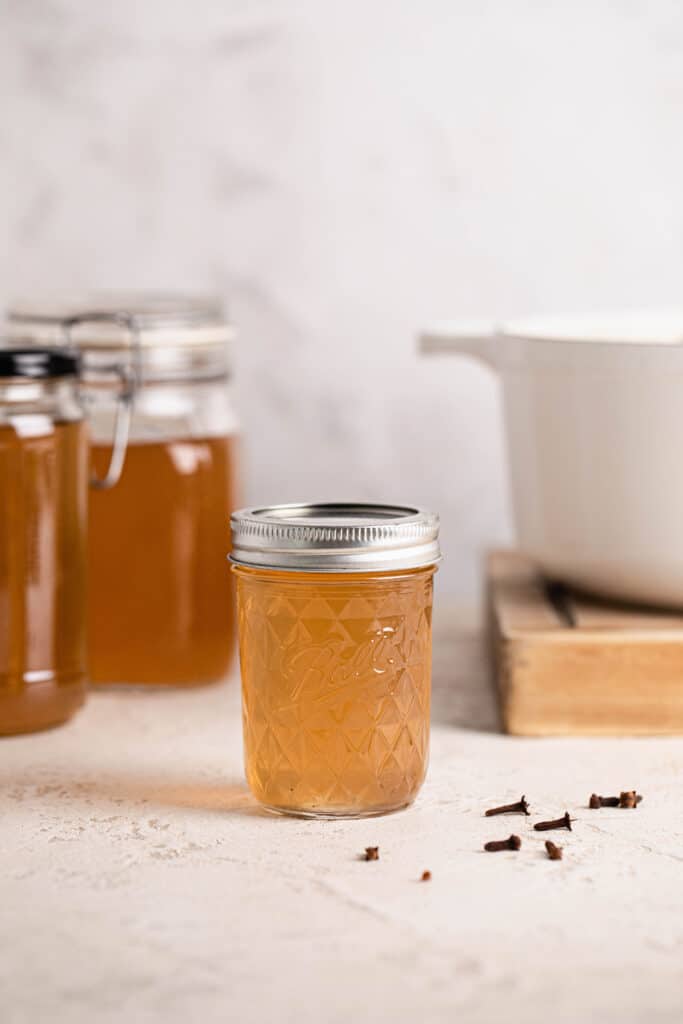
Did you know that you can even make your own vegetable broth and stock from veggie scraps? In this post I will also show you how to make homemade vegetable stock from vegetable scraps, using ingredients like potato peels, mushroom stems and onion skins.
I love using this flavorful stock as a base for vegetarian soups like my No Potato Leek Soup, or Roast Pumpkin and Leek Soup. It has such a good flavor and works well for any recipe that requires a cooking liquid. Making your own vegetable stock is such a great idea as it is cheap, can be used in many of your favorite recipes and is perfect for soup season! If you're looking for chicken stock, then you might like to try my Easy Low FODMAP Chicken Broth.
Jump to:
Ingredients for Homemade Veggie Stock
Though vegetable stock is quite flexible in terms of what ingredients you use, there are three ingredients that I use in every single broth that I make. These are:
- carrots
- brown onion
- celery heart (the centre stems of the celery, which are the most flavoursome)
These three vegetables are known as aromatics and are essential for getting a depth of flavour needed in homemade stock.
Other ingredients that I have used in this vegetables stock recipe are:
- black peppercorns
- whole cloves
- leek (top green part of the leek)
- bay leaves
- oregano
- cold water
The beauty of making your own stock is that it is quite flexible with what you put into it. Other great additions that you can use as well as the basic vegetable stock ingredients include:
- other fresh herbs such as thyme, parsley or marjoram.
- garlic cloves (just throw in about 4-5 whole cloves, skin on)
- sea salt
Make Homemade Vegetable Stock From Scraps
Holding onto veggie scraps throughout the week and put them to good use by making a batch of veggie broth or stock with. Doing this is such a great way of reducing your households food waste. Follow these simple steps to make a low waste vegetable stock:
- Collect your veggie scraps throughout the week and store in the fridge in a compostable freezer bag or silicone pouch.
- At the end of the week, throw all of the vegetable scraps into a pot and cover with approximately 10 cups of water, or enough so that the vegetable scraps are covered with enough water so that it reaches about ¼ from the top of the pan.
- Follow the homemade vegetable stock recipes instructions to make the stock.
Hold onto scraps like:
- potato peels
- mushroom stems
- onion skins
- garlic skins
- carrot peels
- corn cobs
- kale stems
- ends of onions
- carrot tops
- other vegetable odds and ends
Equipment
It is likely that you will have everything you need to make this vegetable stock recipe already. Here is a list of all of the equipment required to make vegetable stock/broth:
- large stockpot or other large pot or dutch oven
- a second large casserole pan, saucepan or large bowl
- slotted spoon
- a sieve or fine mesh strainer
- about 4 x 1 litre mason jars or a range of sizes (I like to freeze a few 1 litre jars and around 4 smaller jars for those times when you only need a small amount of stock) or other BPA free storage containers.
- Heatproof jug suitable for pouring
- Pen + Labels
- Chopping board + Sharp Knife
How to Make Homemade Vegetable Stock
While making your own stock does require quite a bit of time (around 3 - 3.5 hours), the majority of this time is passive. This means that your attention is only needed for a small amount of time - you can pop your stock on the stove top with the lid on and carry on with whatever you would like to be doing.
Here's how to make vegetable stock.
- Place all of your vegetables, herbs, spices and a large pinch of salt into a large stock pot (the bigger the better).
- Top with water so that the water covers the vegetables. You just need to leave around 5 centimetres of space at the top of the pan so that it doesn't bubble over.
- Bring the pot to a boil and then reduce to a low heat to simmer. Leave to simmer on the lowest heat with the lid on for around 3 hours.
- After 3 hours, turn off the heat. Remove the larger vegetables like the carrots, onion and celery and discard.
- Place a sieve over the top of another large pan or bowl and carefully strain the stock through the sieve. Discard the remnants in the sieve.
- Divide the stock between clean glass jars. Place the lid on each jar and label each jar with "vegetable stock" and the date.
- Store the jars in either the fridge (for 2-3 days) or the freezer (for 2-3 months).
When discarding the vegetables, I like to either dig them into the garden or compost them so that they don't contribute to excess food waste.

How to Use Vegetable Broth/Stock
I love using this vegetable stock to make soup, stews, curries, casseroles, basically anywhere that you would normally use stock is where you can use this vegetable stock! If you're looking for some yummy soup recipes to use this stock in, try these:
- Garlic Creamy Cauliflower Soup
- Thai Red Curry Tofu Noodle Soup
- Comforting White Bean Soup
- Thai Coconut Pumpkin Soup
- Caramelised Leek & Roast Pumpkin Soup
Storage + How to Freeze Homemade Vegetable Stock
Storing stock in sealed glass jars is preferable as it eliminates the possibility of BPA's and other chemicals found in plastics leeching into your stock. If you only have plastic containers to store your stock in, be sure to allow the stock to cool completely before pouring into plastic containers.
When pouring stock into glass jars, make sure you leave space at the top of the jar that allows for expansion of the stock when freezing. You will need to leave at least 2-3 cm depending on the size of the jar. Never fill it all of the way to the top as you will end up with shattered glass and icy stock to clean up!
You can store your stock in the fridge for around 3 days. However, I do like to use it on the same day as I've made it or freeze it straight away for future use to preserve as many nutrients as possible.
Another option is to allow the stock to cool completely before transferring to ice cube trays. Place these in the freezer and once frozen, pop the cubes out into a freezer bag or sealable silicone pouch.

FAQ
Homemade vegetable stock lasts for up to three days in the fridge.
Homemade vegetable stock lasts for up to four - six months in the freezer.
There are a few different things you can do with the leftover vegetables from your homemade stock. You can either chop up the carrots and celery and add them back into your soup or compost the leftover vegetables and herbs.
Pin For Later

📖 Recipe

Equipment
- Chopping Board
- Sharp knife
- Large Casserole Pan
- Seive
- Heat Proof Jug suitable for pouring
- Glass Jars with Lids
- Labels
- Pen
Ingredients
- 1 Leek green tops
- 1 carrot
- 1 brown onion
- 1 celery heart
- 5 cloves
- 5 peppercorns
- 1 bay leaf fresh or dried
- 1 bunch oregano or thyme
- water
Instructions
- Add the leek, carrot, brown onion, celery heart, cloves, peppercorns, bay leaf and oregano to a large casserole pan.1 Leek, 1 carrot, 1 brown onion, 1 celery heart, 5 cloves, 5 peppercorns, 1 bay leaf, 1 bunch oregano
- Fill the pot with water to cover the vegetables, leaving around 5 centimetres space at the top of the pan.water
- Place the lid onto the saucepan and bring to a boil. Boil for 5 minutes and then reduce to a simmer for 3 hours.
- After 3 hours turn off the heat. Remove the leek, carrot and onion and discard. Place a seive over the top of another large casserole pan or mixing bowl. Carefully pour the stock through the seive to strain.
- Remove the seive and use a heat proof measuring jug to divide stock between clean glass jars. If freezing the stock, make sure to leave around 2-3 centimetres (depending on the size of the jar) of space at the top of the jar. This is to prevent the glass breaking as the stock expands when freezing. Place the lid ontop of each jar.
- Write "vegetable stock" and the date onto labels and stick onto each jar before freezing or refrigerating.
Nutrition
For more healthy eating inspiration, follow Our Nourishing Table on Instagram, Pinterest and Facebook.
Did you make this recipe? Let us know how you went by rating this recipe and commenting below.


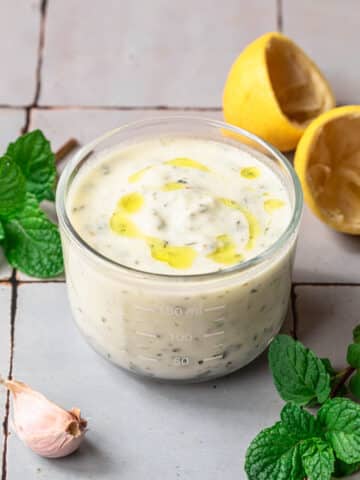
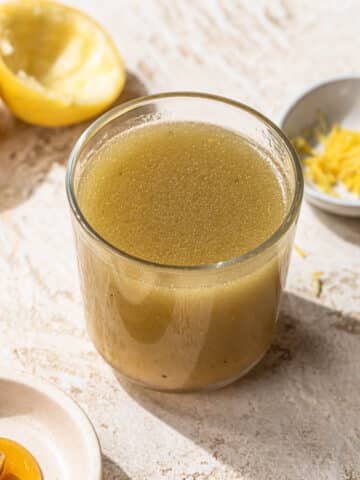
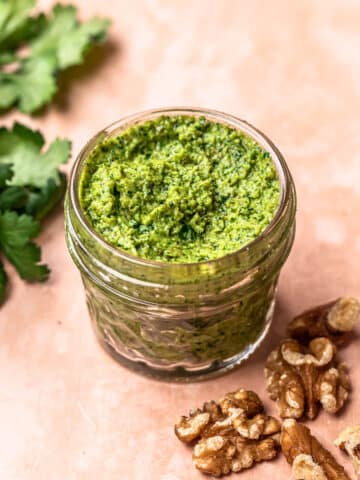
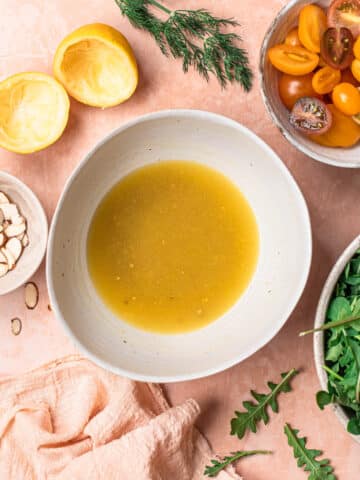
Carol
Looking forward to making this but I can't find a concise recipe to shop from.
Sarah Bell
All of the ingredients and recipe instructions can be found in the recipe card at the bottom of the post.